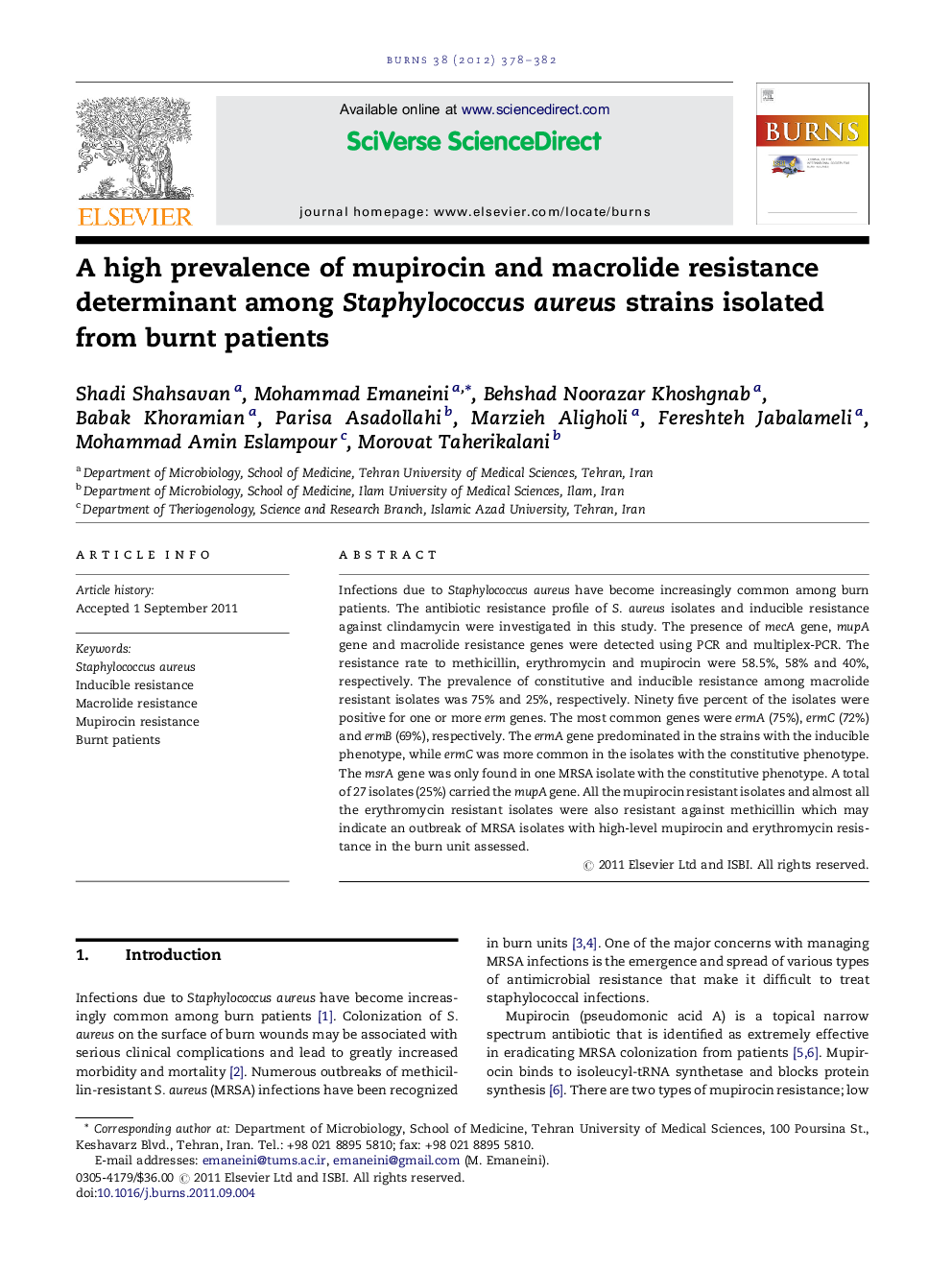| Article ID | Journal | Published Year | Pages | File Type |
|---|---|---|---|---|
| 3104795 | Burns | 2012 | 5 Pages |
Infections due to Staphylococcus aureus have become increasingly common among burn patients. The antibiotic resistance profile of S. aureus isolates and inducible resistance against clindamycin were investigated in this study. The presence of mecA gene, mupA gene and macrolide resistance genes were detected using PCR and multiplex-PCR. The resistance rate to methicillin, erythromycin and mupirocin were 58.5%, 58% and 40%, respectively. The prevalence of constitutive and inducible resistance among macrolide resistant isolates was 75% and 25%, respectively. Ninety five percent of the isolates were positive for one or more erm genes. The most common genes were ermA (75%), ermC (72%) and ermB (69%), respectively. The ermA gene predominated in the strains with the inducible phenotype, while ermC was more common in the isolates with the constitutive phenotype. The msrA gene was only found in one MRSA isolate with the constitutive phenotype. A total of 27 isolates (25%) carried the mupA gene. All the mupirocin resistant isolates and almost all the erythromycin resistant isolates were also resistant against methicillin which may indicate an outbreak of MRSA isolates with high-level mupirocin and erythromycin resistance in the burn unit assessed.
